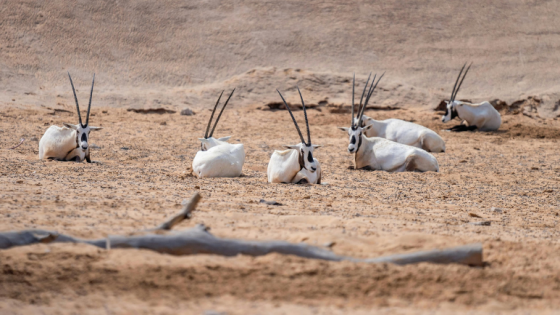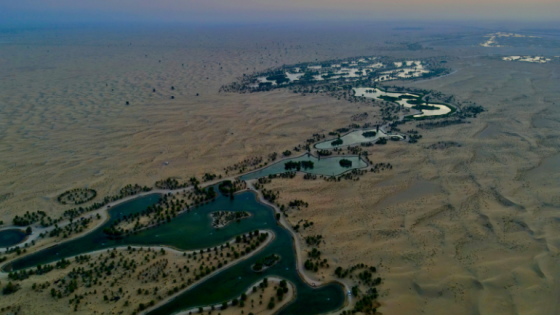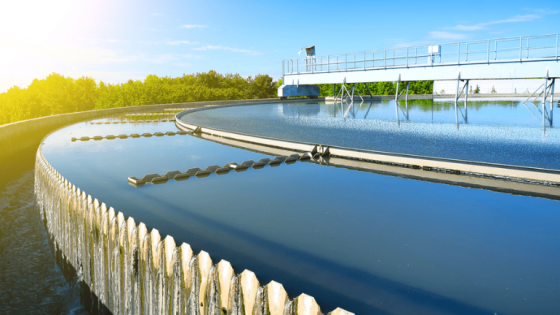Contents
- 1 UAE Ecotourism Sites
- 2 Sustainable Tourism and Eco-friendly Outdoor Activities
- 3 General Resources for Green Travel
- 4 Sustainable Travel and Ecotourism Destinations in the UAE
- 5 Top 4 Exciting Sustainable Travel and Ecotourism Destinations in the UAE
- 5.1 1. Marawah Marine Biosphere Reserve
- 5.2 Attractions in Marawah Marine Biosphere Reserve
- 5.3 2. Al Yasat Marine Protected Area
- 5.4 Tourism Activities at Al Yasat Marine Protected Area
- 5.5 3. Jebel Jais, Ras Al Khaimah
- 5.6 Tourist Attractions in Jebel Jais
- 5.7 4. Ras Al Khor Wildlife Sanctuary
- 5.8 Tourist Attractions at Ras Al Khor Wildlife Sanctuary
- 6 UAE Ecotourism Sites and Destinations: Your Next Adventure
- 7 Top 10 Ecotourism Opportunities in the UAE
- 7.1 Wildlife Tour on Sir Bani Yas Island
- 7.2 The UNESCO-listed Al Ain Oasis
- 7.3 Shipwrecks and Underwater Wonders off Fujairah’s Coast
- 7.4 Endangered Hawksbill Turtles Nesting on Saadiyat Island
- 7.5 Flamingos Up Close in the Umm Al Quwain Wetlands
- 7.6 Kayak Through Mangroves in Mangrove National Park
- 7.7 Hike Past Ancient Fossils near Jebel Dhanna
- 7.8 One of the Largest Uninterrupted Deserts in the World
- 7.9 Birdwatch in a Former City Dump
- 7.10 The UAE’s First National Park from the Back of a Camel
- 8 UAE Ecotourism Sites in Dubai: Top Locations
- 9 Eco-Friendly Hotels and Restaurants in Dubai
- 10 Eco-Friendly Stores in Dubai
- 11 Advantages of Eco-Friendly Tourism in Dubai
- 12 Top 7 Ecotourism Destinations and Eco-Friendly Spots in Abu Dhabi
- 13 Conclusion
- 14 Frequently Asked Questions (FAQs)
The UAE Ecotourism Sites have established one of the largest ecological footprints globally; the Arabian desert is inherently an unsustainable location for extensive urban development, particularly on the scale seen in cities like Dubai and Abu Dhabi. Historically, high temperatures and water scarcity have impeded the expansion of these arid landscapes.
However, with advances in air conditioning, desalination technology, and transportation, cities such as Dubai and Abu Dhabi have transformed into vast urban environments. In regions where summer temperatures frequently exceed 100°F (37.8°C), substantial energy is necessary to maintain a comfortable living environment. Let’s dive into national ecotourism project, ecotourism destinations in UAE, and ecotourism desert safari.
Read more: UAE Art Exhibitions: Discovering Creativity in Dubai and Abu Dhabi’s Vibrant Galleries
UAE Ecotourism Sites
In the UAE, major projects—including hotels, shopping malls, golf courses, skyscrapers, roads, artificial islands, entertainment facilities, and other infrastructure—impact the environment significantly. Until recently, awareness of these environmental effects has been minimal. The excessive use of water and electricity puts an additional strain on natural resources. While Dubai is famous for its beach resorts, golf courses, and green spaces, the maintenance of such landscapes demands an enormous volume of water, making the UAE the leading country in the world for per capita water consumption.
Read more: Dubai Antique Shops: Explore Vintage Treasures in the City’s Unique Antique Stores
Sustainable Tourism and Eco-friendly Outdoor Activities
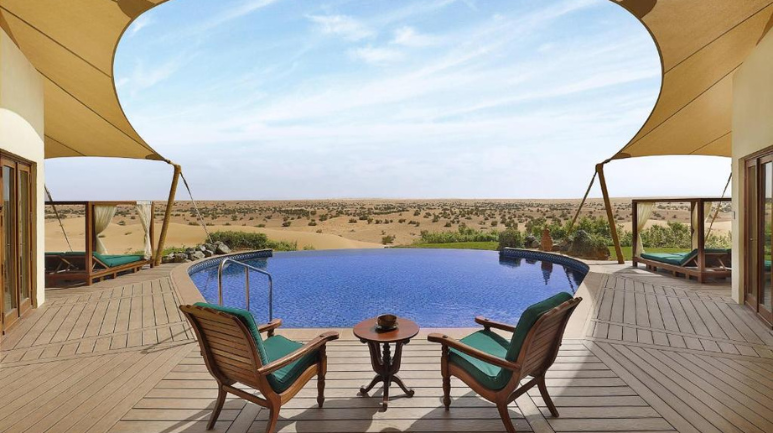
Sustainable tourism is still a developing sector in Dubai; however, the local government is starting to recognize its potential benefits. The Dubai Department of Tourism and Commerce Marketing recently initiated a “Green Tourism Award” program to promote eco-tourism innovations. This campaign focuses on reducing the tourism sector’s carbon footprint and encourages initiatives that highlight the UAE’s natural resources.
Eco-friendly outdoor activities available include traditional desert safaris, hiking, and camping in the Hajar Mountains, as well as scuba diving and snorkeling along the UAE’s eastern coast, and bird-watching excursions. With over 400 bird species in the region, excellent bird-watching opportunities exist at locations like Mushrif Park, Emirates Golf Club, Jebel Ali, and Hatta.
Visitors can experience an eco-friendly desert stay at the Al Maha Desert Resort, which is situated on a significant dune within 233 sq. km (90 sq. miles/5% of Dubai’s land area) conservation reserve. For a more adventurous experience, expedition companies offer trekking tours in the Hajar Mountains, sometimes starting from abandoned Shihhi villages (a tribe from the northern emirate of Ras al-Khaimah and neighboring Oman).
The best scuba diving and snorkeling spots are found in Fujairah and near “Snoopy Island” in the Gulf of Oman, where tropical fish swim around vibrant coral reefs. For those seeking adventure, there are plenty of opportunities to explore the fascinating shipwrecks located further down the UAE’s eastern coastline.
Read more: Top 35 Dubai Nightlife Spots: Clubs, Bars, and Nightlife Activities to Enjoy
General Resources for Green Travel
In addition to the resources available in Dubai, various organizations offer valuable insights into sustainable traveling. Responsible Travel is an excellent source for sustainable vacation ideas; this platform is managed by advocates for ethical tourism. Sustainable Travel International encourages ethical tourism practices and hosts a comprehensive directory of sustainable properties and tour operators globally.
Tourism Concern, based in the UK, aims to alleviate social and environmental issues linked to tourism, while the Association of Independent Tour Operators (AITO) is composed of specialists promoting sustainable holiday options. Canadian resources provide extensive guidance on sustainable travel, including transportation advice.
In Australia, Ecotourism Australia sets guidelines and standards for the industry. Various directories such as The Green Directory, Green Pages, and Eco Directory offer sustainable travel tips and lists of environmentally friendly businesses. Organizations like Carbon Fund, Terra Pass, and Cool Climate provide information on “carbon offsetting,” which helps counteract greenhouse gas emissions from flights. Green Hotels recommends green-rated accommodations worldwide that meet strict environmental criteria.
Additionally, Environmentally Friendly Hotels rates green lodging options, while Tread Lightly provides information about animal welfare issues worldwide. For ethical swimming with dolphins, refer to the Whale and Dolphin Conservation Society.
Read more: Dubai Concert Venues: Top 13 Music Halls and Live Event Spaces to Experience
Sustainable Travel and Ecotourism Destinations in the UAE
Ras Al Khaimah stands out as a premier destination for sustainable travel and ecotourism within the United Arab Emirates. Boasting a rich cultural heritage, breathtaking landscapes, and a dedication to environmentally friendly practices, it offers an ideal setting for exploration and unforgettable vacations.
Additionally, there are numerous other locations throughout the UAE where you can engage in ecotourism activities. For instance, the Dubai desert safari tours provide an exhilarating and informative journey across the dunes. If you seek an adventurous experience in eco-conscious surroundings, the UAE has plenty to offer. Continue reading to discover sustainable travel and ecotourism destinations across the region.
Read more: UAE Live Performances: Top Concerts and Events for Music Lovers in 2024
Top 4 Exciting Sustainable Travel and Ecotourism Destinations in the UAE
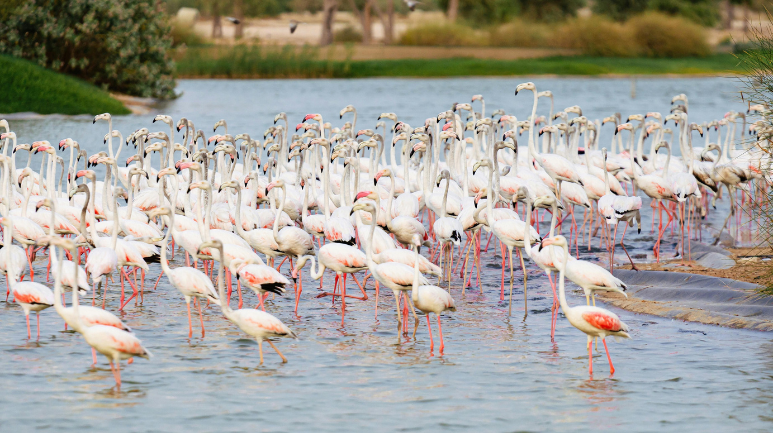
Taking time to relax and recharge is vital for everyone. Whether you’re on a honeymoon, enjoying a break from work, or spending quality time with family, consider exploring sustainable travel and ecotourism destinations in the UAE. Here are four exciting places that promise unforgettable experiences:
1. Marawah Marine Biosphere Reserve
The Marawah Marine Biosphere Reserve is home to a diverse array of marine life, including turtles, seabirds, coral reefs, and mangroves. This reserve is a sought-after tourist destination due to its unique features. Designated as a Marine Biosphere Reserve in 2007, it now hosts over 260 species of fish and other marine organisms, along with a variety of plant species.
Attractions in Marawah Marine Biosphere Reserve
The reserve features a Visitor Centre that offers educational resources about the various species found in the area. During your visit, you can enjoy:
- Corals: The reserve is home to numerous coral species, including Acropora, Pocillopora, and Fungia.
- Mangroves: Several mangrove species thrive here, providing crucial habitats for various marine creatures.
- Seabirds: A haven for birdwatchers, Marawah Marine Reserve is home to hundreds of bird species.
- Turtles: The reserve hosts several turtle species, including green turtles, hawksbills, and loggerheads.
- Snorkeling and Diving: With its crystal-clear waters, vibrant coral reefs, and rich marine life, the reserve is perfect for snorkeling and diving.
Whether you’re visiting as a couple, with family, or with friends, you’re sure to have a fantastic time. Knowledgeable guides are available to educate you on promoting sustainable tourism practices.
2. Al Yasat Marine Protected Area
The Al Yasat Marine Protected Area serves as a habitat for a wide variety of marine life, including turtles, seabirds, and dolphins. Spanning over 2,250 square kilometers of safeguarded ocean, this area plays a crucial role in the UAE’s efforts to protect its natural environment. Established in 2005, it was designated a protected marine habitat to foster conservation and sustainability, supporting numerous fish species and other marine organisms.
Tourism Activities at Al Yasat Marine Protected Area
The Al Yasat Marine Protected Area has launched various initiatives to promote sustainable tourism and conserve its natural resources. Visitors can enjoy a range of eco-tours and activities, such as:
- Snorkeling: This area is ideal for snorkeling, featuring clear waters, vibrant coral reefs, and diverse marine life.
- Kayaking: Various kayaking tours are available, allowing visitors to explore the coastline and observe marine life up close.
- Wildlife Watching: The protected area is home to a variety of wildlife, including turtles, seabirds, and dolphins. Guided tours are available to take you out to sea for a chance to see these species in their natural habitat.
- Birding: Birdwatchers can join guided tours that provide insights into the diverse seabird species in the area.
- Environmental Education: The protected area offers educational tours that enhance visitors’ understanding of the importance of conserving and protecting the environment.
Regardless of which activity you choose, your visit to the Al Yasat Marine Protected Area will contribute to the conservation of its natural resources and promote sustainable tourism. By exploring this reserve, you can be confident that your visit supports the protection of this unique and delicate ecosystem.
3. Jebel Jais, Ras Al Khaimah
Jebel Jais, the tallest mountain in the UAE, reaches an impressive height of 1,934 meters. This remarkable peak in the Rocky Mountain Range is a popular destination, offering stunning vistas of the surrounding scenery.
Tourist Attractions in Jebel Jais
Visitors to Jebel Jais can engage in a variety of activities, including:
- Jais Sky Maze: This outdoor adventure park features raised walkways and platforms interconnected by ropes, bridges, and slides, creating an exhilarating experience high above the ground.
- Jebel Jais Flight: Experience the longest zipline in the world, spanning 1,680 meters over the Arabian Gulf and capable of reaching speeds of up to 160 km/h.
- Hatta Heritage Village: This traditional mountain village offers local shops and craftsmanship centers, providing an opportunity to delve into the local culture and appreciate its historic allure.
Feel free to choose an activity that resonates with you as you explore the eco-friendly attractions in Ras Al Khaimah.
4. Ras Al Khor Wildlife Sanctuary
Ras Al Khor Wildlife Sanctuary is a sanctuary for numerous bird species and wildlife, making it a prime spot for birdwatching. Situated in the heart of Dubai, it is recognized as one of the UAE’s most vital wetland areas. Established in 1985 and designated as a protected area in 1998, it serves as a crucial habitat for hundreds of migratory bird species, playing a key role in bird conservation.
Tourist Attractions at Ras Al Khor Wildlife Sanctuary
To enhance visitor awareness of conservation and sustainability, the sanctuary has implemented various initiatives. Activities available at Ras Al Khor Wildlife Sanctuary include:
- Birdwatching: Home to a diverse array of birds, including flamingos, herons, and raptors, the sanctuary offers guided tours that provide insights into the various avian species residing there.
- Eco-tours: Participate in tours aimed at educating visitors about the significance of environmental conservation. These tours also highlight the sanctuary’s ongoing conservation initiatives.
- Wildlife Watching: The sanctuary hosts a variety of wildlife, including reptiles and mammals. Guided excursions allow you to observe these species in their natural environments.
The surroundings of Ras Al Khor implement eco-friendly strategies to lower their carbon impact, including solar energy utilization and recycling programs. Your visit to Ras al Khor Wildlife Sanctuary contributes to the protection of its natural resources and fosters sustainable tourism.
Read more: Dubai Water Parks: Best Theme Parks and Waterpark Adventures to Visit in 2024
UAE Ecotourism Sites and Destinations: Your Next Adventure
Endless dunes stretch across the landscape, shifting colors from vibrant red to warm orange and soft beige. Suddenly, a glimpse of white appears on the horizon—another flash follows. A pair of Arabian oryx emerges in view. Once an iconic sight within the Dubai Desert Conservation Reserve, these magnificent antelope, often likened to Arabian unicorns for the distinctive way their horns converge, were nearly extinct just a few decades ago, with their global population dwindling to a handful in the 1970s due to excessive hunting.
In 1999, as part of a visionary effort by UAE founder Sheikh Zayed bin Sultan Al Nahyan aimed at conservation, 70 Arabian oryx were reintroduced to the reserve. Their population has since flourished, now exceeding 400 individuals, making it the largest free-ranging herd of its species in the UAE. This successful reintroduction program has positioned the reserve as a hub for conservation research and a rapidly growing destination for travelers eager to witness these remarkable creatures.
Read more: UAE Live Concerts: Top 32 Music Events and Gigs in Dubai
Top 10 Ecotourism Opportunities in the UAE
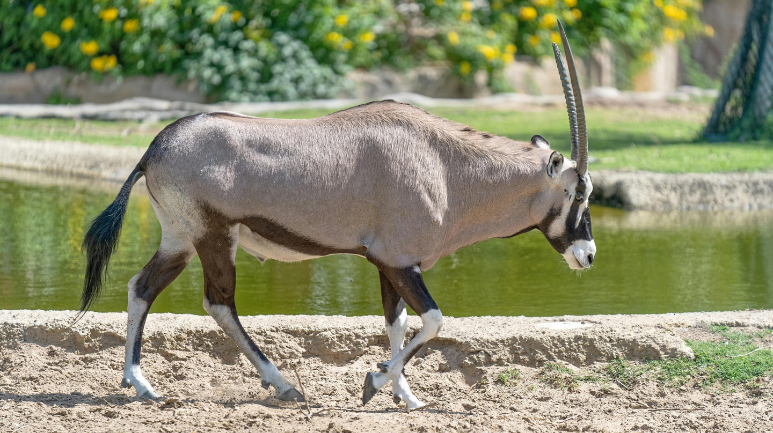
The UAE continues to prioritize conservation, recognizing the significance of preserving its diverse environments for future generations. With 43 protected areas covering 14 percent of the nation, the country showcases a variety of landscapes, including vast deserts, lush oases, mangrove-fringed wetlands, and tropical islands brimming with marine life.
Here are ten ecotourism opportunities you won’t want to miss, from witnessing the hatching of critically endangered hawksbill turtles to kayaking through mangroves and observing Arabian oryx in their natural habitat.
Wildlife Tour on Sir Bani Yas Island
Sir Bani Yas, the largest of Abu Dhabi’s eight islands, served as the beloved private retreat of the late Sheikh Zayed until he died in 2004. Under his ‘Greening the Desert’ initiative, Sheikh Zayed planted hundreds of trees and established a wildlife conservation center on the island. Today, it is accessible to the public and continues to serve as a refuge for a wide variety of flora and fauna.
You can spend the night at the Desert Islands Resort & Spa by Anantara before embarking on a two-hour wildlife drive through the Arabian Wildlife Park, where over 13,000 animals roam freely. Look for native species like the sand gazelle and Arabian oryx, as well as carefully managed exotic animals such as giraffes, cheetahs, hyenas, and ostriches.
The UNESCO-listed Al Ain Oasis
Located near the foot of Jebel Hafeet Mountain, which borders Oman, Al Ain Oasis is the UAE’s first UNESCO World Heritage site offering a curated visitor experience. Spanning 3,000 acres and dating back 4,000 years, this oasis showcases the traditional lifestyles of Bedouin tribes in the desert.
Visit the Eco-Center to learn about ancient farming techniques and the environmental legacy of Sheikh Zayed before exploring the lush greenery. Meandering paths shaded by swaying palm fronds lead you past historic aflaj, or irrigation systems, which supply mountain water to over 550 family-run date palm farms.
Shipwrecks and Underwater Wonders off Fujairah’s Coast
Fujairah’s coastline is home to some of the most spectacular scuba diving and snorkeling in the UAE. Located along the Gulf of Oman, it features stunning rock formations, vibrant reefs, and fascinating shipwrecks that support a diverse array of marine life. Close to Khor Fakkan, Martini Rock is among the UAE’s most popular dive sites. This submerged coral formation, resembling a martini glass above the water, lies in a protected marine area inhabited by colorful corals, eels, scorpionfish, sea turtles, and barracuda.
Nearby, the Inchcape 10 wreck, the largest of three steel crew boats sunk to create artificial reefs, is now gradually being enveloped by lively pink and yellow corals teeming with marine life like moray eels, lionfish, nudibranchs, and eagle rays.
Further up the northern coast in Fujairah, Dibba is famous for its cave diving. From Dibba Port, you can take a traditional dhow boat to “The Caves,” diving into mystical underwater chambers through sea-eroded limestone tunnels.
Endangered Hawksbill Turtles Nesting on Saadiyat Island
From April to September each year, a 5.5-mile stretch of beach on Saadiyat Island in Abu Dhabi turns into a protected nesting ground for hawksbill turtles. Initiated in 2010, the Hawksbill Turtle Conservation Program is the first of its kind in the Gulf, resulting in the hatching of hundreds of critically endangered turtles.
Each morning during the nesting season, staff from nearby St. Regis and Hyatt hotels scan the beach for nesting signs, carefully sectioning off nests. Measures are taken to ensure safe passage for the turtles to the sea while offering guests boardwalk access. At night, hotels dim their lights to avoid disorienting newborn turtles, whose instincts guide them to move toward the brightest direction.
Flamingos Up Close in the Umm Al Quwain Wetlands
The emirate of Umm Al Quwain is renowned for its stunning landscapes, and its protected coastal wetlands evoke a fairy-tale setting. Serpentine waterways bordered by mangroves meander through seven islands in a picturesque lagoon colored robins-egg blue. Shallow zones and mudflats draw an impressive variety of endemic and migratory birds. Boating is the ideal way to explore these wetlands, with rental services available at the local tourist center.
Al Sinniyah, the largest island, is particularly popular, thanks to the Khor al Beidah Marine Reserve. Antelope can be spotted darting among the mangroves, while flamingos gather on sandy flats, and the endangered Socotra cormorant glides overhead. The wildlife in Umm Al Quwain’s wetlands is largely unaccustomed to humans, often allowing for close encounters as they remain undisturbed by nearby tours. This emirate is just one of several protected areas in the UAE where flamingos shine, including the Ras Al Khor Wildlife Sanctuary in Dubai.
Kayak Through Mangroves in Mangrove National Park
Mangroves play a crucial role in the UAE’s ecosystem, and the Mangrove National Park, located just outside central Abu Dhabi, offers the best opportunity to witness them. Covering over 250 acres, this park comprises 75 percent of the UAE’s complete mangrove forest area. These natural barriers protect against tidal surges, help prevent erosion, sequester carbon dioxide from the atmosphere, and serve as vital breeding habitats for marine and avian life. On a two-hour kayak tour with Sea Hawk Water Sports, you can encounter a variety of wildlife, including western reef herons, flamingos, mottled crabs, sea turtles, and dolphins.
Hike Past Ancient Fossils near Jebel Dhanna
Located north of Abu Dhabi, near Jebel Dhanna, a chain of mountains and striking cliffs, known as the Baynunah and Shuwaihat Formations, tells a story of an ancient river’s deposits. These formations indicate that the UAE was once a lush savannah during the Miocene epoch. Since 1979, numerous fossils dating back six to eight million years have been unearthed in these areas, including the remains of a primitive three-toed horse, a crocodile, and a four-tusked elephant. Last year, a fossil of a previously unidentified hippopotamus relative was also discovered. The stunning landscape and geological significance make Jebel Dhanna a favored hiking destination in the UAE.
One of the Largest Uninterrupted Deserts in the World
Awakening at Qasr Al Sarab Resort by Anantara, the view is truly breathtaking. Situated on the edge of Abu Dhabi’s Empty Quarter in the Arabian Desert, the resort overlooks an endless expanse of rolling orange-red dunes. Engage with local history and wildlife through guided walks, bike rides at dawn through the dunes, or practice traditional archery as desert tribesmen once did.
Adjacent to the resort is the fenced Qasr al Sarab Eco-Reserve, where Arabian oryx have been reintroduced into the wild through the Sheikh Mohamed bin Zayed Arabian Oryx Reintroduction Program. Once on the brink of extinction in the 1970s, the population of oryx in the UAE has successfully risen to 6,900 due to these conservation efforts.
Birdwatch in a Former City Dump
Wasit Nature Reserve in Sharjah, transformed from an illegal trash dump just a decade ago, now thrives as an essential sanctuary for birdlife. This small coastal wetland has been restored to support over 60 species of migratory and endemic birds, including two percent of the world’s population of black-winged stilts. Viewing platforms around the reserve and enclosures in the Visitor Center offer great opportunities for observation. Sand gazelles also roam the area as part of Sharjah’s Breeding Center for Endangered Arabian Wildlife.
Similarly, Al Wathba Wetland Reserve, located 25 miles southeast of Abu Dhabi, mirrors Wasit’s size and setup. Established in 1988, Al Wathba was recognized as an internationally important wetland by the Ramsar Convention in 2013. The reserve is home to 250 bird species, including a flamingo population that exceeds 4,000 during migration seasons in spring and fall. Visitors can learn more about the reserve’s inhabitants at the Visitor Experience Center and along the nature trails, which are open on Thursdays and Saturdays outside of the breeding season.
The UAE’s First National Park from the Back of a Camel
The Dubai Desert Conservation Reserve offers breathtaking views of the desert dunes and a chance to see the reserve’s herd of over 400 endangered Arabian oryx. Experience the dramatic landscape as the Bedouins did—riding on the back of a camel. Platinum Heritage is one of the few tour operators authorized to bring visitors into the reserve, where they have perfected the camel safari experience.
From atop the camel, take in the sweeping views as your convoy casts shadows across the majestic dunes. Before you leave, enjoy a traditional Bedouin dinner while learning about time-honored practices such as henna application, falconry, and bread-making.
Read more: Abu Dhabi Water Activities: Thrilling Sea Adventures and Watersports in the UAE
UAE Ecotourism Sites in Dubai: Top Locations
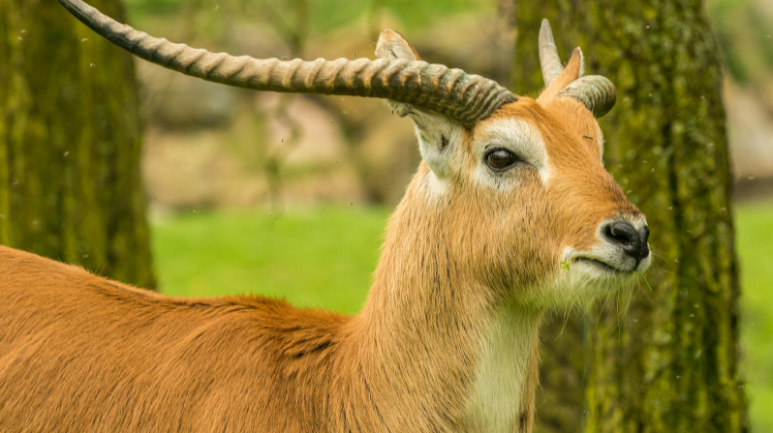
Here are some of the top eco-friendly leisure destinations in Dubai:
Dubai Desert Conservation Reserve (DDCR)
The Dubai Desert Conservation Reserve is one of the largest nature reserves in the UAE, spanning an impressive 225 square kilometers, which represents nearly 5% of Dubai’s total land area. This reserve is home to a diverse array of flora and fauna, including hundreds of plant species, birds, mammals, and reptiles. Visitors can partake in various activities such as trekking, safaris, sandboarding, as well as camel and horse riding, and falconry. For a unique dining experience, consider visiting Sonora Camp for a luxurious meal in the desert.
Al Marmoon Desert Conservation Reserve
Covering an area that is twice the size of DDCR, the Al Marmoon Desert Conservation Reserve is entirely unfenced. It is also the location of the Mohammed Bin Rashid Solar Park, the largest renewable energy project in the area. Open to the public, this reserve hosts over 200 species of native birds and more than 150 migratory bird species.
Additionally, you can observe various types of reptiles. Al Marmoon is particularly noteworthy for its significant populations of Arabian oryx and flamingos, as well as various endangered species that have been relocated here. History enthusiasts will also want to explore the Saruq Al Hadid archaeological site, which dates back 3,000 years to the Iron Age and is one of the region’s key cultural attractions.
Hatta Dam
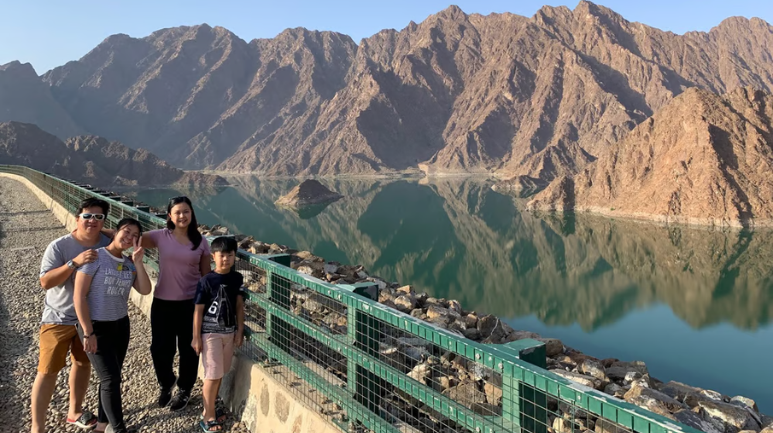
Hatta Dam is renowned for its stunning views of azure waters nestled among rugged mountains. As part of the Hatta Mountain Conservation Reserve, it serves as a sanctuary for endangered mountain wildlife. Visitors can take a scenic drive along the dam, hike through the surrounding mountains, or enjoy water activities such as kayaking, paddle boarding, or boating.
Ras Al Khor Wildlife Sanctuary
Bird-watchers will find Ras Al Khor Wildlife Sanctuary, also known as the “Cape of the Creek,” to be an essential destination. Covering 6.2 square kilometers, this sanctuary features diverse habitats including salt flats, mudflats, mangroves, and lagoons. It not only supports a variety of bird species but also serves as a breeding ground and refuge for mammals, crustaceans, and fish.
The Dubai Turtle Rehabilitation Project
Experience outdoor fun while contributing to turtle conservation during the cooler months. The Dubai Turtle Rehabilitation Project focuses on the Hawksbill Turtle, an endangered species indigenous to the UAE. Since its inception in 2004, the project has rescued and released over 550 turtles back into the ocean. You can visit the Turtle Lagoon at Jumeirah Al Naseem, which is open to the public for free.
The Green Planet
Among Dubai’s sustainable attractions, The Green Planet stands out for its innovative design. This facility features the world’s largest man-made, life-sustaining tree, home to over 3,000 species of plants and animals. The building has achieved a Leadership in Energy and Environmental Design (LEED) certification and incorporates recycled water in its waterfall system, supporting conservation efforts in Dubai.
Dubai Aquarium and Underwater Zoo
The Dubai Aquarium & Underwater Zoo, located within Dubai Mall, is a fantastic sustainable destination for family entertainment. This impressive 48-meter-long aquarium houses a 10-million-liter tank, one of the largest globally, and showcases around 140 species of marine animals, including the largest collection of Sand Tiger Sharks. Visitors can engage in interactive experiences such as cage snorkeling and shark dives to connect with the underwater world.
Jumeirah Golf Estates
Golf enthusiasts can enjoy a visit to the Jumeirah Golf Estates, a hub promoting sustainable sports tourism in Dubai. Eco-friendly initiatives at the Estates encompass green landscaping, climate research labs, and educational centers. The Green Sports Hub, developed in collaboration with international football star Ebbe Sand, features solar energy, water conservation practices, waste management systems, and reusable technology throughout the estate.
Read more: Dubai Nightclubs: Best Spots for Unforgettable Nightlife and Clubbing Experiences
Eco-Friendly Hotels and Restaurants in Dubai
If you’re looking for green accommodation or dining options in Dubai, there are several eco-friendly hotels and restaurants available. We’ve highlighted a few natural attractions in the city and are now ready to explore some of the sustainable eateries, hotels, and resorts.
Al Maha Resort
Nestled within the Dubai Desert Conservation Reserve, Al Maha Resort incorporates remarkable sustainable features, including 43 swimming pools that run on solar energy. This luxury resort offers an opportunity to immerse yourself in the stunning landscapes of the Dubai desert.
Nikki Beach Resort & Spa
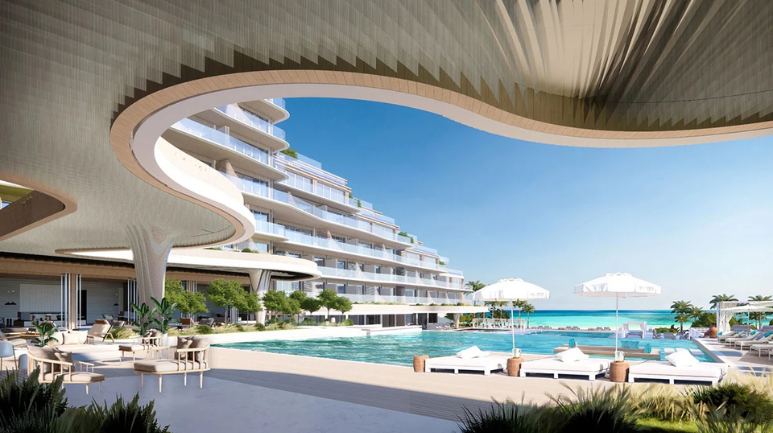
Nikki Beach Resort & Spa stands out as a premier destination for ecotourism in Dubai. In recent years, the resort has adopted several green initiatives, notably replacing plastic straws with eco-friendly alternatives made from cornstarch and biodegradable polylactic acid across its venues, including Nikki Beach, Soul Lounge, Cafe Nikki, and Key West.
Amwaj Rotana
This opulent resort located in Jumeirah Beach Residence (JBR) has implemented the Operation Care Initiative. This program encourages guests to donate items they no longer need, which has resulted in the collection of hundreds of clothes, shoes, bags, towels, socks, and toys for those in need, thereby minimizing waste.
Bareburger Restaurant
The renowned New York burger chain, Bareburger, allows patrons to enjoy their favorite burgers while being environmentally conscious. The various locations in Dubai feature interiors crafted from sustainable and recycled materials, encompassing everything from ceilings and wall coverings to furniture. Their food packaging also utilizes compostable or recycled materials. Additionally, Bareburger sources free-range meat from local farms to help decrease its carbon footprint.
Baker & Spice
For a casual eco-friendly lunch, visit Baker & Spice in Souk Al Bahar, Downtown Dubai. This rustic café prides itself on using locally sourced ingredients and provides only biodegradable straws. Its furnishings are made from sustainable materials.
Read more: UAE Groundwater Reserves: Abu Dhabi’s Arab Water Resources and Groundwater Recharge Levels
Eco-Friendly Stores in Dubai
If you’re in the mood for some quick shopping during your visit, several stores are offering environmentally friendly products.
Milk & Honey
As the first five-star gourmet store in Dubai, Milk & Honey is a 24-hour convenience establishment that provides a variety of organic foods and eco-friendly detergents. The store also uses 100% recyclable bags, with shoppers benefiting from instant discounts when they return them.
The Green Ecostore FZE
This online store is favored by eco-conscious consumers looking for innovative products. Shoppers can find a wide array of sustainable items, including solar-powered backpacks, reusable sandwich bags, and water-saving devices.
Read more: UAE Natural Wonders: Discover Dhabi’s Beautiful Natural Attractions
Advantages of Eco-Friendly Tourism in Dubai
Opting for eco-friendly tourism initiatives helps safeguard Dubai’s natural landscapes for future generations while also contributing to the global effort against climate change. This approach enhances the visitor experience by fostering a meaningful connection to the region’s culture and environment in a responsible way.
Read more: UAE Desert Landscapes: Experience Dubai Royalty in Photography
Top 7 Ecotourism Destinations and Eco-Friendly Spots in Abu Dhabi
Abu Dhabi, the crown jewel of the United Arab Emirates, showcases a stunning blend of architectural marvels and cultural diversity in a city where tradition harmonizes with modernity. While the city is celebrated for its opulent skyscrapers and historical landmarks, it has also made significant strides in promoting sustainable travel.
In a world where environmental stewardship is increasingly crucial, Abu Dhabi has opened its doors to travelers seeking eco-conscious, sustainable experiences. A city tour will illuminate the fascinating mix of heritage and sustainability. Here are the top seven eco-friendly attractions to explore in Abu Dhabi:
1. Masdar City
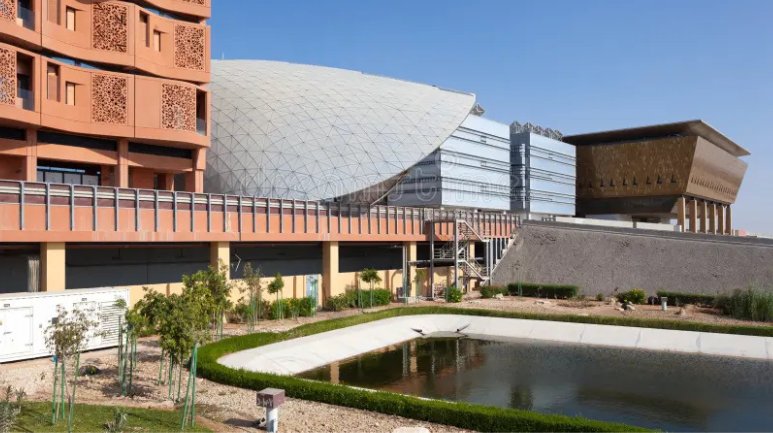
Sustainability Hub: Often regarded as the world’s first sustainable city, Masdar City is known for its cutting-edge technologies, including solar energy and natural climate control in its streets.
Public Transportation: The city promotes the use of electric and autonomous vehicles, significantly reducing carbon emissions and traffic congestion.
Waste Management: Masdar City features an advanced waste management system that includes recycling bins, composting facilities, and waste-to-energy technology.
2. Al Jubail Mangrove Park
Ecosystem Preservation: Khalifa Park exemplifies efforts to protect and restore Abu Dhabi’s vital mangrove ecosystems. Boardwalks allow visitors to safely explore these sensitive areas without causing damage.
Educational Opportunities: Visitors can learn about the crucial role mangroves play in carbon capture and discover the diverse species that inhabit these ecosystems.
3. The Sustainable City
Renewable Energy: This community harnesses renewable energy sources, such as solar panels and wind turbines, resulting in minimal carbon dioxide emissions.
Zero-Waste Lifestyle: Residents are encouraged to minimize waste and recycle extensively, supported by strict recycling regulations and a culture of composting.
Green Transportation: Electric vehicles are favored here, significantly reducing dependence on harmful fossil fuels.
4. Eco-Desert Safari
Reduced Carbon Footprint: These safaris employ eco-friendly vehicles and practices to preserve the delicate desert environment.
Responsible Tourism: Guides often share valuable information about desert ecosystems, local cultures, and the importance of preserving these unique landscapes.
5. Sheikh Zayed Desert Learning Centre
Educational Center: The center offers insights into desert flora and fauna, along with efforts being made to conserve these vital resources.
Interactive Exhibits: Visitors can explore engaging displays that discuss the importance of desert conservation and sustainable living practices.
6. Arabian Wildlife Park
Animal Conservation: This park plays a key role in protecting native Arabian species, including gazelles and Arabian oryx.
Habitat Restoration: Initiatives are in place to restore natural habitats, allowing wildlife to roam freely in safe environments.
Educational Programs: Guests can learn about the region’s unique species and the park’s conservation initiatives.
7. Al Wathba Wetland Reserve
A Birdwatcher’s Paradise: The reserve is a haven for bird enthusiasts, hosting numerous migratory species that pass through its wetlands.
Biodiversity Conservation: It serves as a sanctuary for many vulnerable and endangered species, with ongoing efforts to protect their natural habitats.
Educational Facilities: Visitors can explore the significance of wetlands, the variety of ecosystems they support, and their crucial role in biodiversity conservation.
Read more: UAE Mangrove Forests; National mangroves forest in Emirates Dubai, Abu Dhabi
Conclusion
UAE Ecotourism Sites showcase a harmonious blend of natural beauty and sustainable practices, making them prime eco-tourism destinations. From the stunning Al Yasat Marine Protected Area to the breathtaking Ras Al Khor Wildlife Sanctuary, these sites offer eco-friendly experiences that connect visitors with the region’s rich biodiversity. Explore the vast expanses of the Dubai Desert, where traditional desert safaris reveal the enchanting landscapes of the emirate of Abu Dhabi.
Additionally, the Marawah Marine Biosphere Reserve stands out as UAE’s largest nature reserve, inviting nature enthusiasts to witness its unique marine life and habitats. By choosing to visit these ecotourism destinations, you enjoy unforgettable adventures and contribute to preserving the UAE’s natural treasures for future generations. Embrace sustainability and make a positive impact while exploring these incredible sites.
Read more: UAE Oasis Locations; Desert Oasis Al Ain Oasis Liwa Oasis locations oases in the UAE
Frequently Asked Questions (FAQs)
What kind of tourism is popular in the UAE?
The country’s prominent tourist attractions include Dubai’s Burj Khalifa and Palm Jumeirah, Abu Dhabi’s Sheikh Zayed Grand Mosque and Yas Island, and Fujairah’s Al Hajar Mountains.
What is the eco-tourism in Sharjah?
The eco-tourism in Sharjah collection features luxury lodges and boutique hotels in some of Sharjah’s most unique locales. Each resort is meant to engage guests in the emirate’s natural beauty and rich culture while minimizing environmental effects.
What is an ecotourism site?
According to the UN Tourism definition, ecotourism refers to forms of tourism that have the following characteristics: all nature-based forms of tourism in which the primary motivation of the tourists is the observation and appreciation of nature as well as the traditional cultures that exist in natural areas.
Where are most ecotourism destinations found?
The top ecotourism destinations are in the following countries:
Iceland. Exploring Iceland’s magnificent landscapes is high on most Eco-tourist’s bucket lists; then:
– Malaysia.
– Galapagos Islands, Ecuador.
– United States.
– Finland.
– Jordan.
